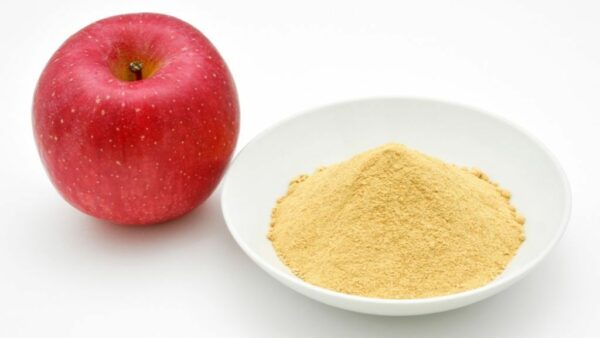Does the name Pectin sound familiar, but you are not sure why? Can we help you with that? Think about the ingredients listed on the labels of food products. Yes, that is where you must have seen Pectin, which is also often used at home when making marmalades, jams and jellies. This is a type of Gelatin, but it is extracted from plants, making it different from traditional Gelatin in many ways. If you are curious about Pectin, read our article with all the important information on this ingredient.
This article looks at the following topics:
- What is Pectin?
- The characteristics of Pectin NH
- Pectin vs Gelatin
- The physiological effects of Pectin
What is Pectin?
Pectin is an important component of the cell walls of terrestrial plants; in chemical terms, it is a polysaccharide. You can recognise it as the food additive E440 commercially; they also sell it in the form of powder as pure Pectin. Pectin is used in the food industry for its gelling property, primarily for the production of fruit jellies, jams and marmalades. It can also be found among the ingredients of desserts, ice creams, cake glazes, parlour candies, mayonnaise, different sauces and preserved pastries. You do not have to avoid Pectin, as it is an additive that is safe for consumption. It is generally approved for use in food products without any limitations on quantity. Pectin is used as a gelling, raising or glazing agent and as a stabiliser.
It can only be extracted from the skin of plants – apple, pear, grape, plum, carrot, beet or citrus – by hot water. We distinguish between low-ester and high-ester Pectin’s. Low-ester Pectins (E440 i) can only exert their gelling effect in cold water and in the presence of calcium. High-ester Pectins (E440 ii) take rapid effect in cold water, in an acidic medium, in the presence of sugar.
The characteristics of Pectin NH
Pectin NH is a blend that contains amidated, high-ester Pectin (E440 ii). You can use it mostly for water- and fruit-based, low-sugar products. Mixed with the ingredients, its gelling effect takes place after heating, and it becomes completely solid after 24 hours. It dissolves very quickly, but we should make sure to stir it with the ingredients until it is free of lumps.
Pectin vs Gelatin
The main difference between Pectin and Gelatin is their composition. Pectin is plant-based Gelatin and carbohydrate. Gelatin is a mixture of proteins and peptides, and it is of animal origin: it is extracted from the collagen found in the animals’ connective tissues by different chemical processes. Plant-based Gelatin is labelled with E440, while animal-based Gelatin has the label E441. Both are used as thickening agents for food.
Gelatin is not approved by vegetarians due to its animal origin and it is not accepted by certain religions either. It is not allowed to use, for instance, kosher and halal food. In such cases, Gelatin is replaced with Pectin.
The physiological effects of Pectin
Pectin has a good impact on our health. Using plant-based Gelatins, you can make jams with a lower calorie content as less sugar is needed for the process. It can also be applied as a fat alternative: they use it in the food industry for low-fat products.
In addition, Pectin has the ability to bind water, which makes it ideal for a weight-loss diet: it swells in the stomach, reducing the sense of hunger. Pectin aids digestion as well: it can help deal with constipation or diarrhoea as it changes the water content of the stools. It even plays an important role in preventing colon cancer. Plant-based Gelatin is a great cholesterol reducer, too! You can consume it to treat cardiovascular diseases, and it also has a detoxifying effect.


